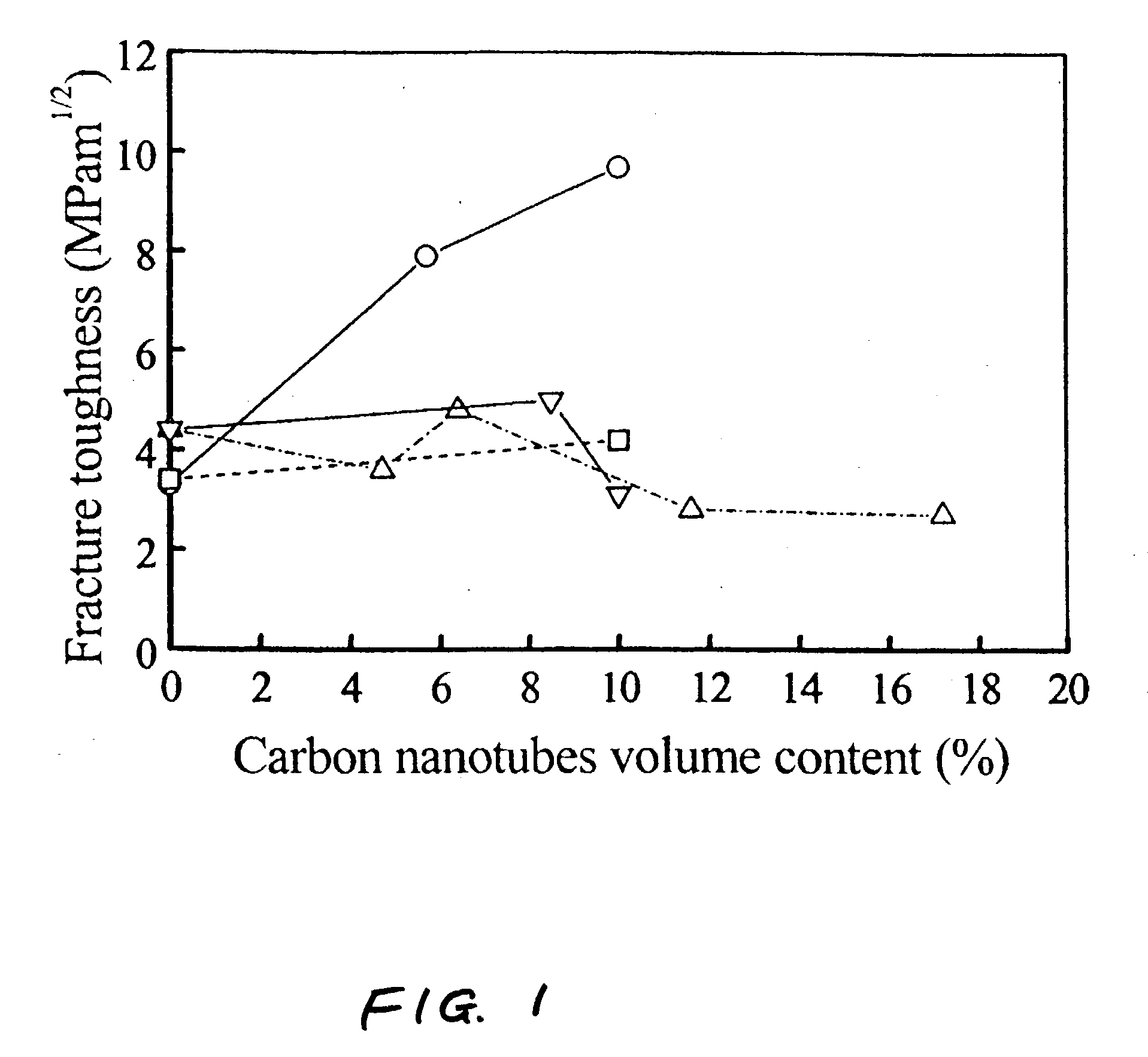Nanocrystalline ceramic materials reinforced with single-wall carbon nanotubes
a technology of carbon nanotubes and nanocrystalline ceramics, applied in the field of ceramics, can solve the problems of brittleness of these materials, limited realization of the promise of nanocrystalline ceramics, and inability to achieve mechanical properties
- Summary
- Abstract
- Description
- Claims
- Application Information
AI Technical Summary
Benefits of technology
Problems solved by technology
Method used
Image
Examples
example
Materials, Equipment, and Experimental Procedures
[0022] Purified single-wall carbon nanotubes produced by a continuous catalytic process with more than 90% of the catalyst removed were obtained from Carbon Nanotechnologies Incorporated (Houston, Tex., USA). The nanotubes were obtained in paper form, and once obtained were dispersed in ethanol with the assistance of ultrasound. The ceramic material used was a mixture of alumina powders consisting of 80% .alpha.-Al.sub.2O.sub.3 and 20% .gamma.-Al.sub.2O.sub.3 with particle sizes of 300 nm (40 nm crystallite size) and 20 nm respectively, obtained from Baikowski International Corporation (Charlotte, N.C., USA). The alumina powder was added to the alcohol suspension of the carbon nanotubes, and a portion of the alcohol was then removed. Separate mixtures representing 5.7 volume percent and 10 volume percent, respectively, of carbon nanotubes relative to total solids, were prepared in this manner. Each powder mixture, still suspended in e...
PUM
| Property | Measurement | Unit |
|---|---|---|
| diameter | aaaaa | aaaaa |
| temperature | aaaaa | aaaaa |
| pressure | aaaaa | aaaaa |
Abstract
Description
Claims
Application Information
 Login to View More
Login to View More - R&D
- Intellectual Property
- Life Sciences
- Materials
- Tech Scout
- Unparalleled Data Quality
- Higher Quality Content
- 60% Fewer Hallucinations
Browse by: Latest US Patents, China's latest patents, Technical Efficacy Thesaurus, Application Domain, Technology Topic, Popular Technical Reports.
© 2025 PatSnap. All rights reserved.Legal|Privacy policy|Modern Slavery Act Transparency Statement|Sitemap|About US| Contact US: help@patsnap.com


